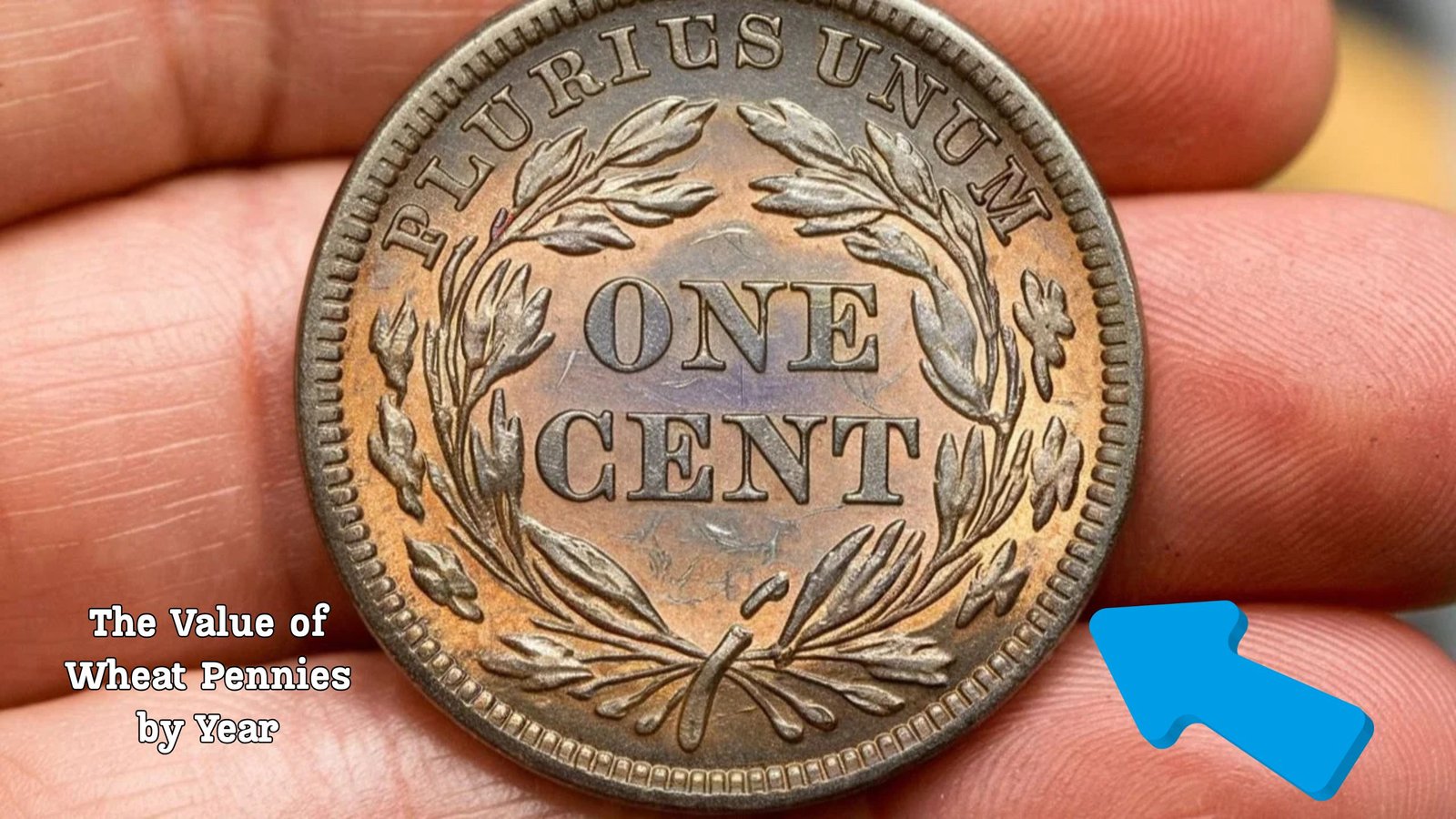Wheat pennies may look like ordinary coins, but they hold deep historical and financial value. Minted between 1909 and 1958, these iconic coins are widely collected today, with certain years fetching impressive prices due to rarity, minting errors, or special historical significance. Their value has grown well beyond their original one-cent face, making them exciting finds for collectors and casual coin holders alike.
What Are Wheat Pennies?
Wheat pennies, also known as Lincoln Wheat Cents, are U.S. one-cent coins that feature a portrait of President Abraham Lincoln on the front and two stylized wheat stalks on the back. They were introduced in 1909 to honor the centennial of Lincoln’s birth and remained in production until 1958, when the reverse design was changed to the Lincoln Memorial. Their simple yet symbolic design — emphasizing American agriculture and heritage — made them one of the most enduring coin types in U.S. history.
Why Year Matters: The Role of Minting Dates
The year a wheat penny was minted plays a crucial role in determining its value. Some years saw massive production runs, making those coins quite common today. Others, due to lower mintage numbers or specific mint locations, are much rarer. Collectors closely track coins by year and mint mark (such as “D” for Denver, “S” for San Francisco, or no mark for Philadelphia). For example, a 1909-S VDB penny — from the first year of issue and bearing the initials of its designer — is highly coveted due to its limited production.
Rare and Valuable Years to Know
Not all wheat pennies are equal in the eyes of collectors. Certain years stand out for their scarcity or unique errors. The 1914-D penny is one such example — few were minted, and even fewer have survived in good condition. The 1922 “no D” penny is another standout, resulting from a worn die at the Denver Mint that left the mint mark off entirely. These coins can be worth hundreds or thousands of dollars depending on their condition. The 1943 copper wheat penny, an accidental strike during a year when steel was used, is one of the rarest and most valuable, sometimes selling for over $100,000.
The War Years: A Unique Chapter in Coinage
During World War II, the U.S. needed copper for military use, leading to a change in the material used for pennies. In 1943, most wheat pennies were made from zinc-coated steel, giving them a silver appearance. While millions of these were produced, a few copper coins were struck by mistake. These rare 1943 copper pennies are now among the most valuable in American numismatics. Similarly, in 1944, the mint returned to using recycled brass shell casings from the war, which also created collectible variations.
End of an Era: 1958 and Beyond
1958 marked the final year of the wheat penny series. In 1959, the U.S. Mint introduced the Lincoln Memorial reverse to honor Lincoln’s 150th birthday. This change ended a nearly 50-year run of the wheat design but began a new chapter in U.S. coinage. The final years of wheat pennies, while more common, still hold value — especially in uncirculated condition or as part of complete sets.
Modern Collecting: Why Wheat Pennies Still Matter
Even decades after they stopped circulating widely, wheat pennies remain a favorite among collectors. They’re relatively easy to find in old collections or coin rolls, and starting a collection is affordable for beginners. Serious collectors often seek to build complete sets by year and mint mark, making even the more common years desirable. For many, these coins represent a tangible piece of American history — one that you might still find in a drawer or change jar today.
Frequently Asked Questions ( The Value of Wheat Pennies by Year )
Are all wheat pennies valuable?
No. While some wheat pennies are extremely valuable, many are quite common and worth only a few cents to a couple of dollars unless they are in pristine condition.
What is the rarest wheat penny?
The 1943 copper penny and the 1944 steel penny are among the rarest and most valuable due to minting errors. They are worth tens of thousands of dollars or more.
How do I know if my wheat penny is rare?
Check the year, mint mark, and condition. Unusual features like doubled images, missing mint marks, or non-standard materials may indicate rarity.
Where can I sell valuable wheat pennies?
You can sell them to coin dealers, at coin shows, online marketplaces like eBay, or through professional auction houses for high-value coins.
Should I clean my wheat pennies before selling?
No. Cleaning a coin can reduce its value significantly. Collectors prefer coins in their original, unaltered state — even if they look dirty.
Would you like me to turn this article into a downloadable PDF, infographic, or printable collector’s guide?




